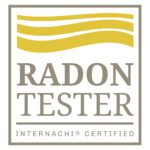
Radon gas levels can differ from one house to the next since it originates from uranium deposits in the earth’s crust. Fissures and cracks in the earth’s bedrock dictates where the gas will rise, so two houses next to each other could have drastically different radon levels if there are more pathways below one home than the other. The gas can ultimately enter into the home through gaps and cracks, and can even seep through concrete to get into the home where people can then be exposed to it.

Professional radon testing equipment in Oregon and Washington
Some home inspectors that offer radon testing use continuous radon testing machines, which is the best way to test for radon during a short time period. Since most real estate transactions have time limits, using a machine for radon testing during a home inspection contingency is a good way to get an accurate reading of radon levels in the home in a short amount of time. This way if high levels are found, clients can use the results to negotiate repairs or credits for the installation of a radon mitigation system. Using a radon machine for testing is considered to be an active test, since the machine takes readings every hour for a set amount of time, usually at least 48 hours.
There is also an easy and inexpensive way to test your home for radon gas by using charcoal packets. Charcoal packet radon test kits can be found online or at most home improvement stores, and are easy to use. The charcoal packets are typically designed to be placed in a home between 2 – 90 days, and work by absorbing radon gas when they are placed in the home. This type of radon test is referred to as a passive test since the charcoal does all the work and no machine is needed. Once the packet has been placed in the home for a certain amount of time (according to the manufacturer’s specifications), the packets can be sent to a lab where they analyze the charcoal and can report on how much radon was present during the testing.
Another advantage of using charcoal packets for radon testing is being able to set up multiple packets in different locations in the home. This could help to determine if certain areas of the home have higher levels than others. Check out the video below for more information on how to test a home for radon gas using charcoal packets.
